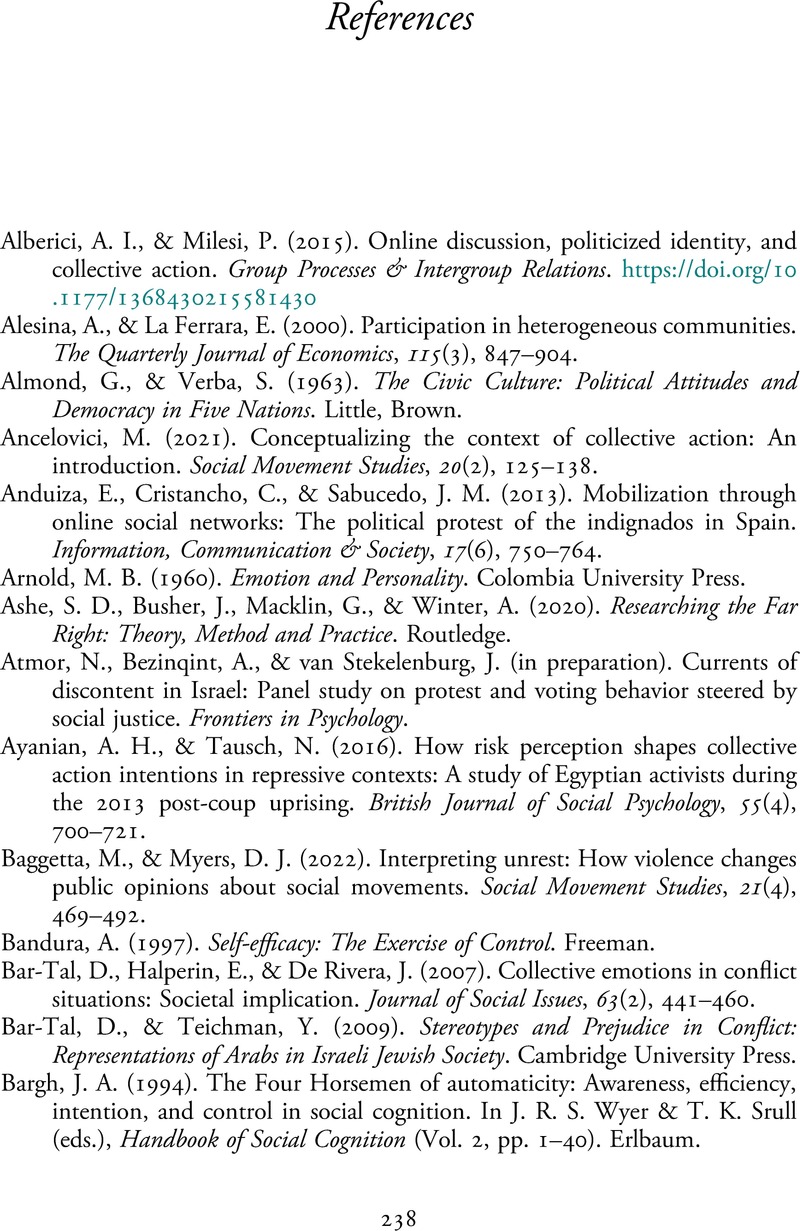Book contents
- A Social Psychology of Protest
- A Social Psychology of Protest
- Copyright page
- Contents
- Figures
- Tables
- Acknowledgments
- Chapter 1 Introduction
- Chapter 2 The Legacy of the Past
- Chapter 3 What Is Contextualized Contestation?
- Chapter 4 Dynamics of Demand
- Chapter 5 Dynamics of Supply
- Chapter 6 Dynamics of Mobilization
- Chapter 7 Context Matters, But How?
- Chapter 8 Should I Stay or Should I Go?
- Chapter 9 Politicization, Polarization, and Radicalization
- Chapter 10 Conclusion
- References
- Index
- References
References
Published online by Cambridge University Press: 23 November 2023
- A Social Psychology of Protest
- A Social Psychology of Protest
- Copyright page
- Contents
- Figures
- Tables
- Acknowledgments
- Chapter 1 Introduction
- Chapter 2 The Legacy of the Past
- Chapter 3 What Is Contextualized Contestation?
- Chapter 4 Dynamics of Demand
- Chapter 5 Dynamics of Supply
- Chapter 6 Dynamics of Mobilization
- Chapter 7 Context Matters, But How?
- Chapter 8 Should I Stay or Should I Go?
- Chapter 9 Politicization, Polarization, and Radicalization
- Chapter 10 Conclusion
- References
- Index
- References
Summary

- Type
- Chapter
- Information
- A Social Psychology of ProtestIndividuals in Action, pp. 238 - 273Publisher: Cambridge University PressPrint publication year: 2023



